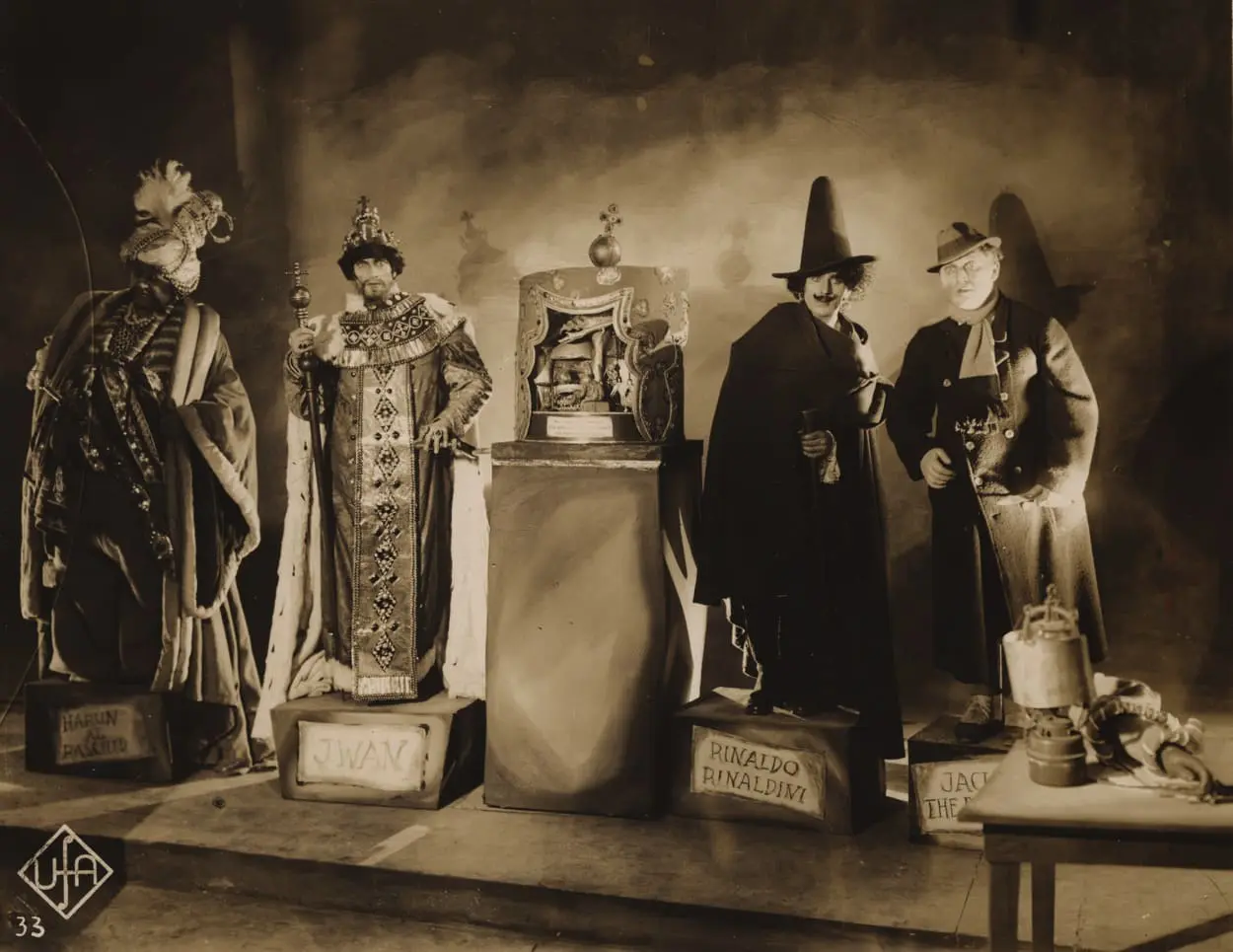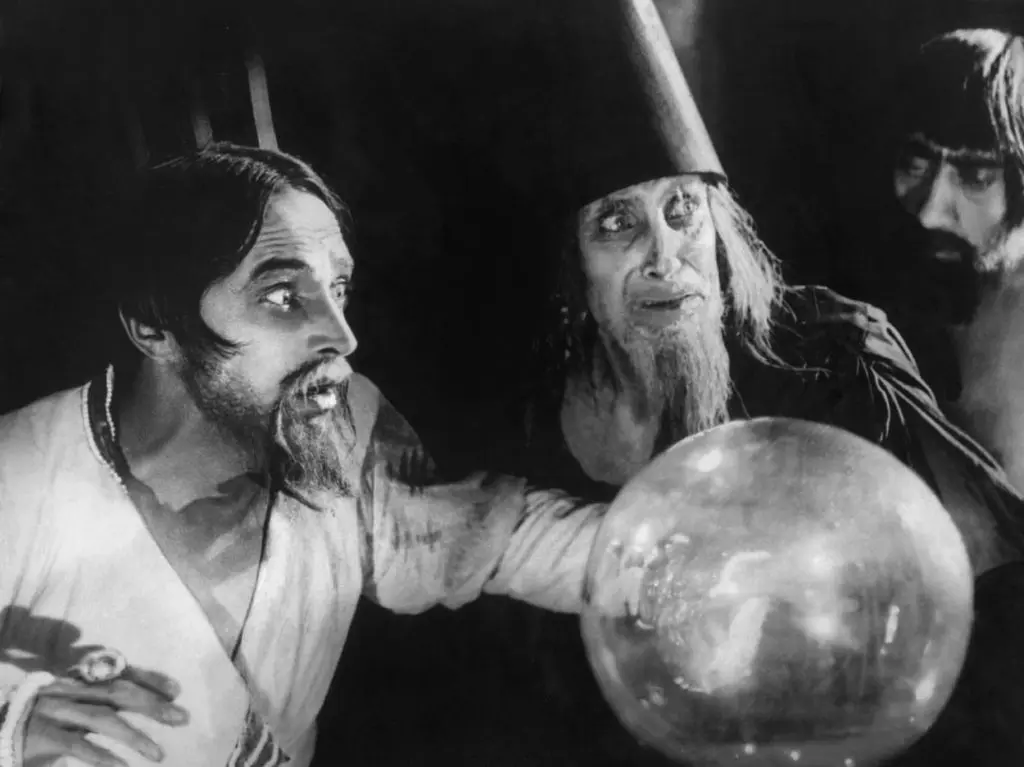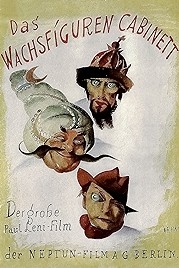In probably the best condition it’s ever going to be seen, the Eureka Masters of Cinema 2019 restoration of Waxworks is a good 25 minutes shorter than the German original, all trace of which has disappeared. Instead, the Deutsche Kinemathek and Cineteca di Bologna took a surviving print from the British Film Institute and, using elements scavenged from around the world, put together this assemblage for a 2K restoration reinstating the original colour tinting. It’s a historically important film but also a vastly entertaining one, and if you’re a fan of German expressionism, it’s probably required viewing.
The original German title, Das Wachsfigurenkabinett, is a clear nod to The Cabinet of Dr Caligari, a blockbuster success from four years earlier. And in the tilting perspectives, the setting at a funfair and the presence of two of Caligari’s stars – Werner Krauss and Conrad Veidt – there are more connections.
Director Paul Leni is a more cinematic, less theatrical director than Caligari director Robert Wiene and you can see why this film got him his Hollywood ticket – fast edits, in-camera special effects, shifting visual perspectives, tight compositions and dramatic (ok, theatrical) lighting.
It’s a portmanteau film and one quarter of it never got made – that’s why you can see bandit Rinaldo Rinaldini in that main picture above but he doesn’t appear in the film. But to the plot, in which a wax museum owner hires a writer (Wilhelm Dieterle, later, as William Dieterle, a Hollywood director of epics like The Hunch Back of Notre Dame, starring Charles Laughton) to dream up some new stories to help bring his waxworks to life. And off “the poet”, as he’s billed, goes, imagineering away in different scenarios, in each of which he’s accompanied by the waxworks owner’s comely daughter Eva (Olga Belajeff), in tales of honest love under siege.
First “the poet” is a baker and Eva is his wife, a woman so brimming with lust that when the baker kneads the dough, his wife responds as if he’s kneading her thighs. This obvious lustiness is something that the Grand Vizier has noticed, who tells Caliph Harun al Raschid (Emil Jannings), who then sets out to make a dishonest woman of the baker’s wife by seducing her. A gripping story told with dash.
In the second story Dieterle is a groom thrown into a dungeon by Ivan the Terrible (handsome, saturnine Conrad Veidt) who intends to have his way with the man’s new wife, all the while hoping to cheat fate by avoiding his own prophesied death. Veidt goes all out, overdoing the eyes (as he tended to do), in a foreshadowing of the boggly acting style perfected by Al Pacino.
And on to the third, the story of Spring-Heeled Jack (aka Jack the Ripper, played by Caligari star Werner Krauss) as, with murderous intention, he pursues a young couple (guess who) through the streets of London. Here is where the bulk of the missing material most likely was, since this is a much shorter segment than the other two. As a sort of compensation it’s also the most overtly expressionist and filmic, much of it taking place on sets that are almost cubist in their wonkiness, with Leni layering one exposure over another to create an effect that’s almost Dali-esque in its surrealism.
Throughout, the craftsmanship is superb, the lighting brilliant. Watching it now in this amazing restoration, considering the scrappiness of its sources, give us some idea of what it must have looked like when it debuted, sharp and crisp as a new banknote.
Waxworks is usually ranked after Caligari in terms of importance, which is probably fair enough, but it’s a much better film. Better made, more filmic, more exciting. And even at this distance, with most of us detuned to the dramatics of movies of the silent era, it’s vastly watchable and extremely entertaining.
Waxworks – Watch/buy the remarkable Eureka Masters of Cinema restoration at Amazon
I am an Amazon affiliate
© Steve Morrissey 2021


